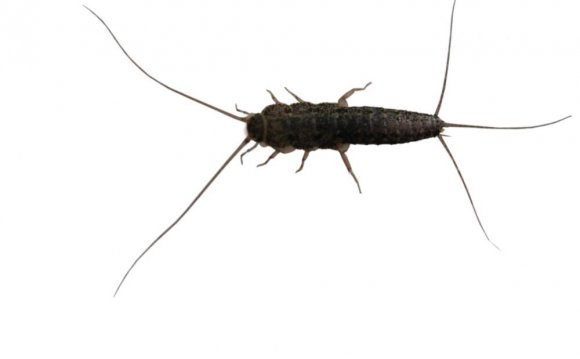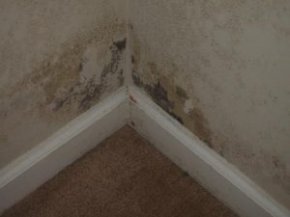
 Mildew is a thin, black, or sometimes white, growth produced by mold. Though molds are always present in the air, those that cause mildew need moisture and certain temperatures to grow. Mold will grow on anything, and mildew will flourish wherever it is damp, humid, warm, poorly lit and/or where air is not circulated. Cellars, basements, crawl spaces, and even clothing closets should be watched closely for growth.
Mildew is a thin, black, or sometimes white, growth produced by mold. Though molds are always present in the air, those that cause mildew need moisture and certain temperatures to grow. Mold will grow on anything, and mildew will flourish wherever it is damp, humid, warm, poorly lit and/or where air is not circulated. Cellars, basements, crawl spaces, and even clothing closets should be watched closely for growth.
Mildew can also be found on draperies and rugs in basement recreation rooms, on shower curtains, and on damp clothes rolled up for ironing. These molds are also likely to grow in a new house because of moisture in the building materials. As the molds grow, they cause considerable damage and leave a musty odor. They discolor fabrics (including leather) and sometimes they eat into them until the fabrics rot and fall to pieces. To protect your home and your possessions, mildew prevention is a must!
Moisture & Humidity Prevention Basics
House mold cannot exist without a source of moisture; mildew prevention is basically a process of seeking out areas that are too moist or humid and drying them up. Excessive moisture or humidity may indicate that repairs or additional insulation are needed. Some basements are continually wet from water leaking through crevices in the wall, so replace cracked or defective mortar and make sure outside drainage is adequate. If your clothes dryer is equipped with a vent, have it exhausted to the outside to remove moist air. Get rid of dampness throughout the house by heating for a short time, then open the doors and windows to let out the moisture-laden air. An exhaust fan may also be very beneficial in mildew prevention.
Need to find a pro for your Mold or Mildew Removal?
Find ProsCool air holds less moisture than warm air. Properly installed air-conditioning systems remove moisture from the air by taking up warm air, cooling it, and circulating the cool, dry air back into the room. A humidistat can be attached to the unit to control the humidity. When using air-conditioners or dehumidifiers, keep windows and doors closed.
Air movement and good ventilation are excellent at removing moisture. When the air outside is drier than that inside, ventilation allows the dry air to enter, take up excess moisture, and then get carried outside. When natural breezes are not sufficient, you can use electric fans placed in a window, set in a wall, or vented to the attic to move air from the house.
Never let clothing or other fabric articles lie around damp or wet. Dry soiled clothes before putting them into the hamper. Stretch out wet shower curtains. Dry washed garments and fabrics thoroughly and quickly. Fabrics dried slowly may get sour and musty smelling; this is not a good sign.
Mildew Prevention: Take Proper Precautions
If you already have house mold problems, mildew prevention is a tedious task. However, by identifying places where house mold is likely to form, you can nip the problem in the bud by keeping these areas clean and dry. Environments that contain warm temperatures and high humidity levels are ideal for mildew growth. Soil on dirty articles, including clothing, can supply enough food for mildew to start growing when moisture and temperature are right. Greasy films, such as those that form on kitchen walls, also contain many nutrients for mildew-causing molds. Make sure that these areas are watched closely, and make it a point to keep them as clean as possible.
Preventing Musty Mildew Odor
Musty odors, which indicate mold growth, are sometimes noticeable in basements and shower stalls. Take special precautions to get rid of musty odors as soon as possible to prevent further objectionable and damaging house mold. Usually musty odors disappear if the area is well heated and dried. If the odors remain, a service professional is your best bet.
Find Pros








